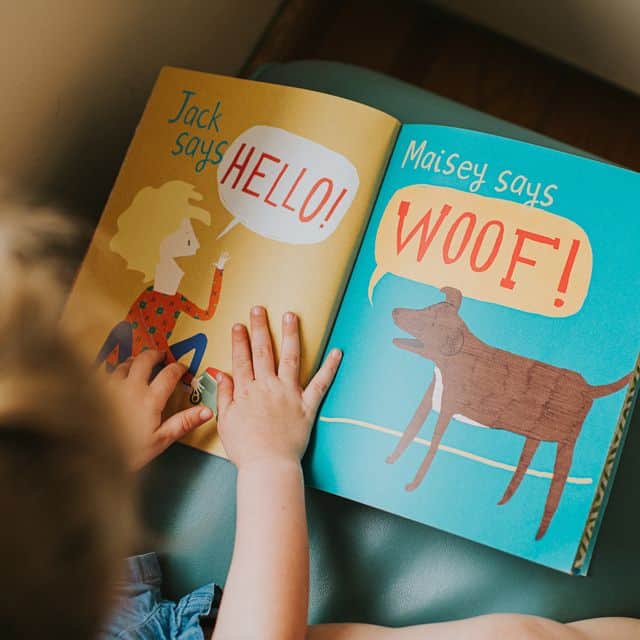Unlocking the World of Imagination: How to Choose the Best Kids’ Books
Welcome, wonderful parents, to the enchanting journey of finding the perfect books for your little ones! In this comprehensive guide, we’ll explore the whimsical world of children’s literature and give you all the magical tips and tricks to select books that will not only tickle your child’s fancy but also support their developmental milestones. So, let’s dive into this storybook adventure together!
Understanding the Age-Appropriate Quest
First things first, the age of your child is like a treasure map to unearthing the most suitable books for their library. Each age group has its unique milestones, and books cater to these developmental stages like a snugly fitting glass slipper. We’ll help you understand what works best for:
- Toddlers and preschoolers – where bright pictures and simple sentences reign supreme
- Early readers – where engaging characters and simple plot lines begin to take center stage
- Young independent readers – where more complex stories and vocabulary expand their horizons
Genres and Themes – Picking Books That Spark Joy
Books are like little portals to various universes. Whether your child loves dragons and fairies or is fascinated by the lives of famous historical figures, there’s a genre or theme out there that’s perfect for them. We’ll cover:
- Classic fairy tales and their timeless lessons
- Adventurous tales for the thrill-seekers
- Science and nature books for the curious minds
- Books that celebrate diversity and cultural awareness
Illustrations That Speak Louder Than Words
A picture speaks a thousand words, especially in children’s books! Illustrations are not mere decorations; they’re vital storytelling tools that help children interpret and engage with the story. We’ll guide you to books with visuals that:
- Complement and enhance the tale being told
- Are age-appropriate and appealing to your child
- Stimulate creativity and cognitive development
Durability and Design – Books That Last Beyond Bedtime
You want the books you invest in to survive the occasional spill or over-enthusiastic page turn. That’s why we look into spines that stand up to the test of time, pages that can endure tiny hands, and covers that resist wear and tear. Your children’s bookshelf should house stories that grow with them!
The Power of Interactive Books
Interactive books with flaps to lift, textures to feel, and sounds to hear can transform reading into a multi-sensory experience. These magical touches not just entertain but also enhance learning and retention. We’ll highlight the kinds of interactive books that:
- Stimulate fine motor skills and sensory development
- Encourage participation and discovery
- Make reading a hands-on activity that kids look forward to
Encouraging a Lifelong Love of Reading
We deeply believe that instilling a love for reading at an early age paves the way for a future filled with curiosity and knowledge. This guide will offer you the tools to create a reading routine filled with joy, bonding, and endless adventures through the pages of children’s books. We’ll help you set the stage for a lifetime of reading, exploring, and learning with your child.
In the next sections of our guide, we will go in-depth into these topics, providing examples of books for different ages and interests, discussing how to diversify your child’s bookshelf, and much more. Stay tuned for a journey that is sure to be as rewarding for you as it is for your child. Your role as the curator of your child’s first library is a critical one – and we’re here to ensure that each and every book you choose brings a spark of joy into your little one’s heart and mind.
Now that we have laid the foundations, let’s turn the page to our next chapter where we delve deeper into selecting the perfect books to nurture your child’s imagination and intellect. Ready to discover the keys to a treasure trove of literary wonders? Let’s continue our adventure into the magical world of kids’ books!

5 Things Parents Should Know in Preparing for Kids’ Books
1. Gauge Your Child’s Interests and Reading Level
Observing your child’s interests is key to selecting books they’ll adore. From dinosaurs to spaceships, knowing what sparks their imagination can guide your choices. Also, consider their reading level; books should challenge them, but not to the point of frustration.
2. Quality Over Quantity
When building your child’s library, aim for quality. A few well-chosen books that resonate with your kid’s tastes and needs are far more valuable than shelves filled with unread volumes.
3. Consider Cultural and Topical Diversity
A diverse library can be a window to the world for your child. Choose books that represent various cultures, traditions, and perspectives to help them become well-rounded individuals.
4. Make Reading a Shared Experience
Reading together can strengthen your bond and enhance your child’s understanding of the story. Use reading time as an opportunity to discuss the book, ask questions, and share thoughts.
5. Be Mindful of Changing Interests
Children’s interests can change rapidly, and their book collection should reflect that. Be prepared to update their library with different genres and levels of reading to keep up with their evolving tastes.
By keeping these five points in mind, you’ll create a nurturing reading environment that grows with your child. Now, let’s explore specific recommendations and practical advice for each point to fully equip you with the knowledge to craft the perfect childhood library for your beloved young reader.
Gauging Your Child’s Interests and Reading Levels
Scour the bookshelves for titles that have a mix of familiar and new vocabulary for your child’s reading level. For interests, look for interactive elements in the books that match their favourite playtime activities. This can foster a deeper connection between their everyday joys and the stories they read.
Quality Over Quantity in Your Child’s Book Collection
Ensure that each book on your child’s shelf is there for a reason. Maybe it’s a classic story with a moral lesson, a book with awe-inspiring illustrations, or a fun tale that gets them giggling. Quality books can become lifelong memories and even family treasures passed down through generations.
The Importance of Cultural and Topical Diversity in Children’s Books
A variety of books can provide children with a broader view of the world and teach empathy and understanding. Look for books that celebrate different cultures through festivals, languages, and everyday life stories. Also include books about different abilities and family structures to foster inclusivity.
Making Reading a Family Activity
Enrich your child’s reading experience by making it interactive. Ask open-ended questions that stimulate critical thinking and imagination. Be expressive – use different voices for characters, and if you’re feeling adventurous, why not act out some scenes together? This brings the story to life!
Updating the Children’s Bookshelf: Keeping Up with Their Changing Interests
Stay attuned to your child’s growing interests. A child fascinated by fairy tales might develop an interest in science fiction as they grow. Keeping a balanced mix of genres that align with their curiosity will keep them engaged and eager to read more.
With these tips at the ready, you’re well on your way to constructing a meaningful, vibrant collection of books that your child will treasure for years to come. Remember that every book is a new adventure, a lesson, and an opportunity for growth. Happy reading!
For more great fun click here. For more information see here
Disclaimer
The articles available via our website provide general information only and we strongly urge readers to exercise caution and conduct their own thorough research and fact-checking. The information presented should not be taken as absolute truth, and, to the maximum extent permitted by law, we will not be held liable for any inaccuracies or errors in the content. It is essential for individuals to independently verify and validate the information before making any decisions or taking any actions based on the articles.




